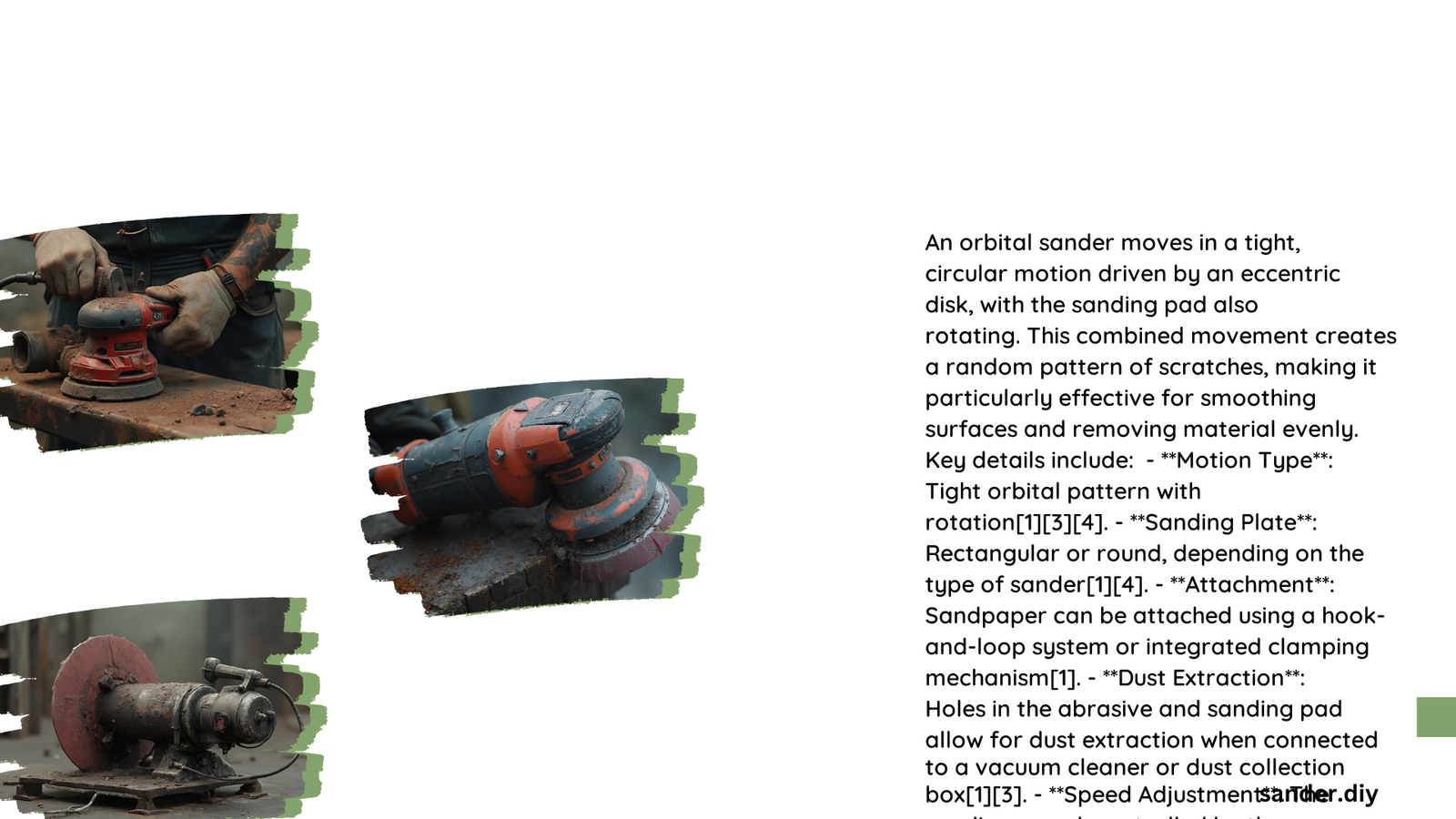Random orbital sanders represent a sophisticated woodworking tool engineered with complex movement mechanisms that transform surface preparation. These precision instruments combine eccentric oscillation and rotational patterns to create uniform, swirl-free finishes across various materials. By generating random scratch patterns through synchronized circular and orbital motions, these sanders eliminate traditional linear sanding limitations, providing woodworkers and craftsmen unprecedented control and efficiency in surface treatment.
What Makes Orbital Sander Movement Unique?
How Do Orbital Sanders Generate Movement?
Orbital sanders utilize a sophisticated movement mechanism characterized by two simultaneous motion types:
- Rotational Motion
- Circular spinning of the sanding pad
- Typically ranges between 4,000-10,000 RPM
-
Enables rapid material removal
-
Orbital Oscillation
- Eccentric pad movement in small elliptical patterns
- Creates randomized scratch patterns
- Minimizes visible linear marks
What Influences Orbital Sander Performance?
Speed Variations and Their Impact
| Speed Range | Performance Characteristics | Recommended Applications |
|---|---|---|
| 4,000 RPM | Gentle, precise sanding | Delicate materials, fine finishing |
| 6,000-8,000 RPM | Balanced performance | General woodworking tasks |
| 8,000-10,000 RPM | Aggressive material removal | Rough surfaces, paint stripping |
Why Does Random Orbital Pattern Matter?
The random orbital movement offers several critical advantages:
- Reduced Visible Scratches: Overlapping scratch patterns become practically invisible
- Consistent Surface Finish: Eliminates linear sanding marks
- Improved Control: Allows more predictable and uniform surface treatment
How Can Users Optimize Orbital Sander Movement?
Technique Recommendations
- Maintain consistent, moderate pressure
- Move sander at steady 1-inch-per-second pace
- Use overlapping passes for complete coverage
- Start sander while on the surface
- Release sander before lifting off material
What Technical Factors Affect Movement?
Several engineering considerations influence orbital sander performance:
- Pad Diameter: Impacts sanding aggressiveness
- Orbit Size: Determines scratch pattern fineness
- Vibration Dampening: Reduces user fatigue
- Weight Distribution: Enhances control and precision
Can Movement Be Customized?
Modern orbital sanders offer:
– Variable speed controls
– Interchangeable pad sizes
– Ergonomic design modifications
– Dust collection integration
Expert Insights on Orbital Sander Movement

Professional woodworkers emphasize understanding your specific project requirements. Different materials and desired finishes demand nuanced approach to orbital sander movement, making adaptability and technique paramount.
Practical Considerations
- Always match sander speed to material hardness
- Use appropriate grit sandpaper
- Maintain consistent motion
- Practice on scrap materials first
Technical Specifications to Consider
- Typical RPM Range: 4,000-10,000
- Pad Sizes: 3×4 inches, 5-6 inches
- Orbit Diameter: 1/8 to 1/4 inch
- Power Requirements: 2-6 amp motors
Conclusion
Mastering orbital sander movement requires understanding its complex mechanics, practicing proper techniques, and selecting appropriate tools for specific applications.
